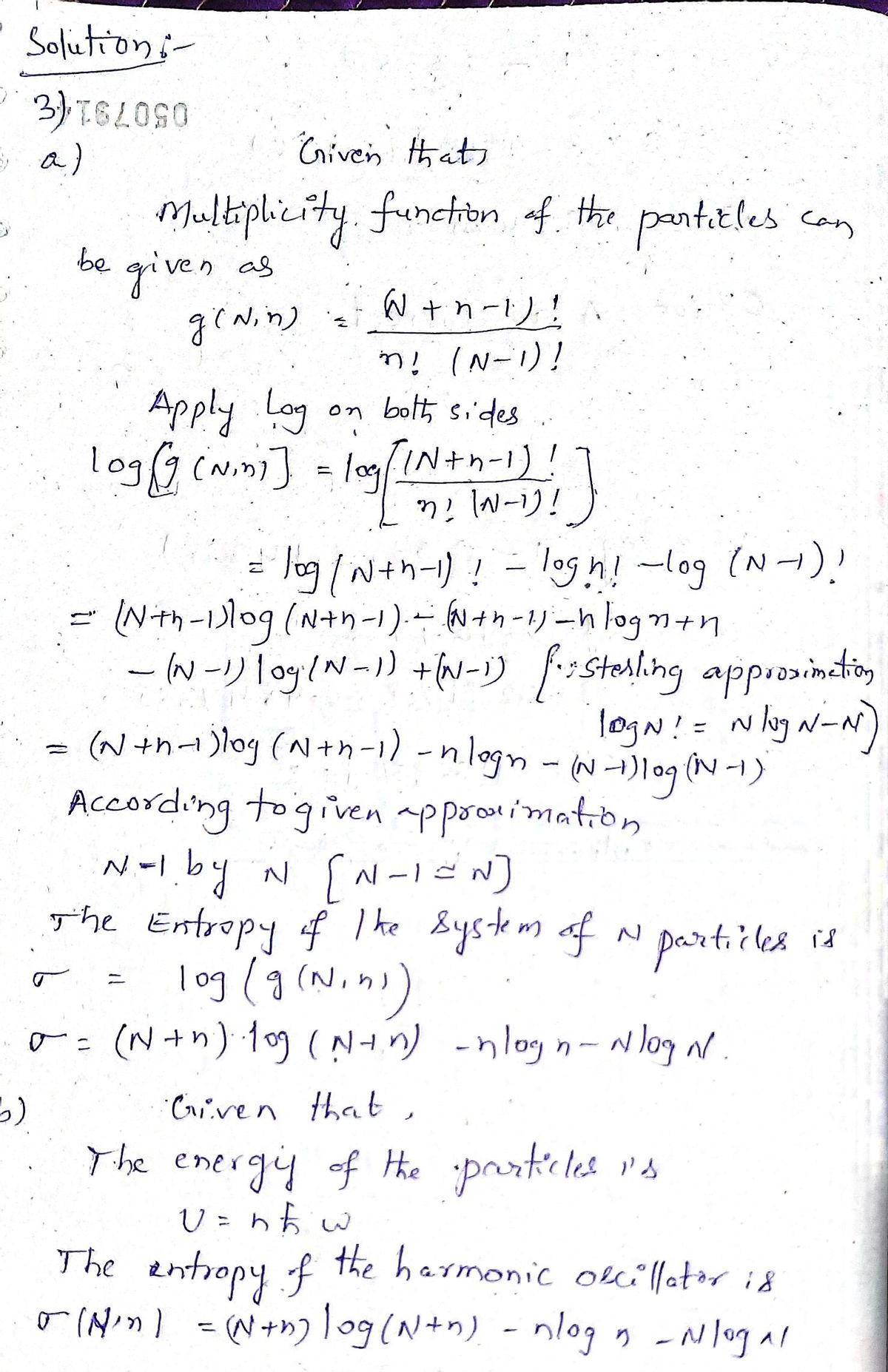3. Kittel, Ch2-3. Quantum harmonic oscillator. (a) Find the entropy of a set of N oscillators of frequency @ as a function of the total quantum number n. Use the (N + n − 1)! multiplicity function (1.55), i.e., g(N,n) = and make the Sterling n! (N − 1)! approximation log N!≈ N log N- N. Replace N-1 by N. (b) Let U denote the total energy nhw of the oscillators. Express the entropy o(U,N). Show that the total energy at temperature Tis U = Nhw exp(ħw/T)-1 " This is the Planck result; it is derived again in Chapter 4 by a powerful method that does not require us to find the multiplicity function.
3. Kittel, Ch2-3. Quantum harmonic oscillator. (a) Find the entropy of a set of N oscillators of frequency @ as a function of the total quantum number n. Use the (N + n − 1)! multiplicity function (1.55), i.e., g(N,n) = and make the Sterling n! (N − 1)! approximation log N!≈ N log N- N. Replace N-1 by N. (b) Let U denote the total energy nhw of the oscillators. Express the entropy o(U,N). Show that the total energy at temperature Tis U = Nhw exp(ħw/T)-1 " This is the Planck result; it is derived again in Chapter 4 by a powerful method that does not require us to find the multiplicity function.
Related questions
Question

Transcribed Image Text:3. Kittel, Ch2-3. Quantum harmonic oscillator. (a) Find the entropy of a set of N
oscillators of frequency @ as a function of the total quantum number n. Use the
(N + n − 1)!
and make the Sterling
n! (N − 1)!
multiplicity function (1.55), i.e., g(N,n) =
approximation log N!≈ N log N – N. Replace N-1 by N. (b) Let U denote the total
energy nhw of the oscillators. Express the entropy o(U,N). Show that the total
energy at temperature Tis
U =
Nhw
exp(ħw/T) -1
"
This is the Planck result; it is derived again in Chapter 4 by a powerful method that
does not require us to find the multiplicity function.
Expert Solution
Step 1

Step by step
Solved in 3 steps with 3 images
